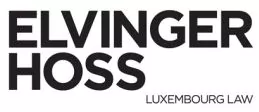On 1 January 2020, the Grand Ducal Regulation of 6 December 2019 specifying the terms and conditions for setting up the shared medical record1 (the "Grand Ducal Regulation") entered into force, thus implementing the dossier de soins partagés (the "Shared Medical Record"). The Shared Medical Record is deployed by the eSanté Agency, an economic interest group encompassing the Luxembourg State, the Caisse nationale de santé (national health insurance provider) and the Centre commun de la sécurité sociale (one of the social security institutions), as well as representative bodies for health care providers and associations representing the interests of patients. The Shared Medical Record is intended to provide a more efficient follow-up of the health data of patients in Luxembourg by keeping their medical history available to both the patient himself, as well as to the health professionals.
The sensitive nature of the personal data contained within the Shared Medical Record obviously calls for adequate data protection, confidentiality and security standards. As a consequence, the Commission nationale pour la protection des données ("CNPD") was largely involved in the elaboration process and has rendered opinions2 regarding the compliance of the Shared Medical Record with existing data protection legislation, in particular the General Data Protection Regulation3 ("GDPR").
We draw your attention to the following:
- The definition of health
professionals. The Grand Ducal Regulation defines health
professionals as any natural person lawfully exercising a regulated
health profession and any health professional, any hospital
establishment, and any health care provider lawfully exercising
their profession outside the hospital sector referred to in the
Social Security Code4 (such as medical analyses
laboratories, pharmacies, opticians).
- Objection and access rights
to the Shared Medical Record by the holder. If the holder
does not object to the creation of the Shared Medical Record, it
will be automatically activated 30 days after receipt of the letter
from the eSanté Agency informing the holder of its creation.
Health professionals may then access the Shared Medical Record. The
holder may modify access rights and deny one or more health
professional(s) access to their entire file or render certain data
inaccessible to one or more health professional(s). The processing
of personal data by the eSanté Agency in relation to the
Shared Medical Record relies on specific provisions of the Social
Security Code5.
- Recipients.
Recipients of the Shared Medical Record are the patient and any
health professional related to the patient. The CNPD recommended in
its opinion that the Grand Ducal Regulation expressly clarifies
that recipients shall not be extended in the future to other
categories of natural and legal persons (such as private insurance
companies, employers, medical practitioners acting as experts on
behalf of third parties, etc.). This recommendation has not,
however, been taken into account in the final version of the Grand
Ducal Regulation.
- Joint
controllership. Both the Grand Ducal Regulation as well as
the Social Security Code6 provide that the eSanté
Agency is responsible for the processing of personal data contained
in the Shared Medical Record. The CNPD questioned this sole
controllership, stressing that the eSanté Agency on the one
hand and the health professionals on the other hand, jointly
participate in achieving the purposes and means of the processing
of personal data contained in the Shared Medical Record. In the
CNPD's view, the eSanté Agency and the health
professionals act in practice as joint controllers. The CNPD
analysis was partly taken into account since the final version of
the Grand Ducal Regulation refers to the health professionals in
their capacity as controllers of the personal data they process in
the context of the Shared Medical Record (for example, when they
enter information regarding a patient's illness or results of
medical analysis directly in the relevant Shared Medical Record).
It must be noted that the legal basis relied upon by the health
professionals for processing such health data is not clear.
- Data retention and data
subject rights. The holder of a Shared Medical Record may
close his Shared Medical Record at any time via the website or upon
request addressed to the eSanté Agency. Within 10 years
following the closing of the Shared Medical Record, the holder may
reopen it, without losing the data contained therein. However, if
not reopened within the period, the data contained in the Shared
Medical Record shall be deleted 10 years after its closure. From
the date of closure, the personal data contained in the Shared
Medical Record are archived and rendered inaccessible. The Shared
Medical Record will also be closed after 10 years of inactivity
from the latest access. The patient benefits from the right to
erasure or the right to rectify inaccurate or incomplete data.
Those rights shall be performed by the health professional or the
eSanté Agency.
- Data Security. The
health professionals, in their capacity as data controllers, shall
implement appropriate technical and organisational security
measures to ensure a level of security appropriate to the
risks.
In conclusion, the Shared Medical Record is without doubt an ambitious step towards a more efficient and modern health care service in Luxembourg. It remains to be seen and verified if the data protection standards implemented for this eHealth tool (in particular the technical and organisational security measures) are high enough to encourage the population to trust and adhere to it.
Footnotes
1. Règlement grand-ducal du 6 décembre 2019 précisant les modalités et conditions de mise en place du dossier de soins partagé. http://legilux.public.lu/eli/etat/leg/rgd/2019/12/06/a909/jo
2. This article focuses on the additional opinion rendered by the CNPD on October 18, 2019 (Deliberation n° 51/2019): https://cnpd.public.lu/dam-assets/fr/decisions-avis/2019/51-DSP.pdf
3. Regulation (EU) 2016/679 of the European Parliament and of the Council of 27 April 2016.
4. See Article 61 (2) of the Social Security Code.
5. Articles 60ter and 60quater.
6. Article 60ter paragraph (4) of the Social Security Code.
The content of this article is intended to provide a general guide to the subject matter. Specialist advice should be sought about your specific circumstances.

